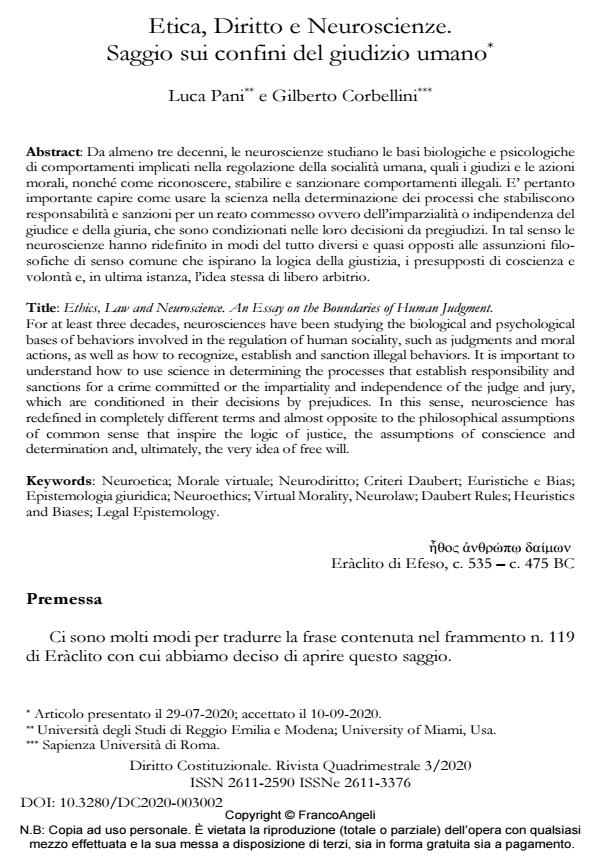Ethics, Law and Neuroscience. An Essay on the Boundaries of Human Judgment
Journal title DIRITTO COSTITUZIONALE
Author/s Luca Pani, Gilberto Corbellini
Publishing Year 2020 Issue 2020/3
Language Italian Pages 30 P. 9-38 File size 283 KB
DOI 10.3280/DC2020-003002
DOI is like a bar code for intellectual property: to have more infomation
click here
Below, you can see the article first page
If you want to buy this article in PDF format, you can do it, following the instructions to buy download credits

FrancoAngeli is member of Publishers International Linking Association, Inc (PILA), a not-for-profit association which run the CrossRef service enabling links to and from online scholarly content.
For at least three decades, neurosciences have been studying the biological and psychological bases of behaviors involved in the regulation of human sociality, such as judgments and moral actions, as well as how to recognize, establish and sanction illegal behaviors. It is important to understand how to use science in determining the processes that establish responsibility and sanctions for a crime committed or the impartiality and independence of the judge and jury, which are conditioned in their decisions by prejudices. In this sense, neuroscience has redefined in completely different terms and almost opposite to the philosophical assumptions of common sense that inspire the logic of justice, the assumptions of conscience and determination and, ultimately, the very idea of free will.
Keywords: Neuroetica; Morale virtuale; Neurodiritto; Criteri Daubert; Euristiche e Bias; Epistemologia giuridica; Neuroethics; Virtual Morality, Neurolaw; Daubert Rules; Heuris-tics and Biases; Legal Epistemology.
Luca Pani, Gilberto Corbellini, Etica, Diritto e Neuroscienze. Saggio sui confini del giudizio umano in "DIRITTO COSTITUZIONALE" 3/2020, pp 9-38, DOI: 10.3280/DC2020-003002